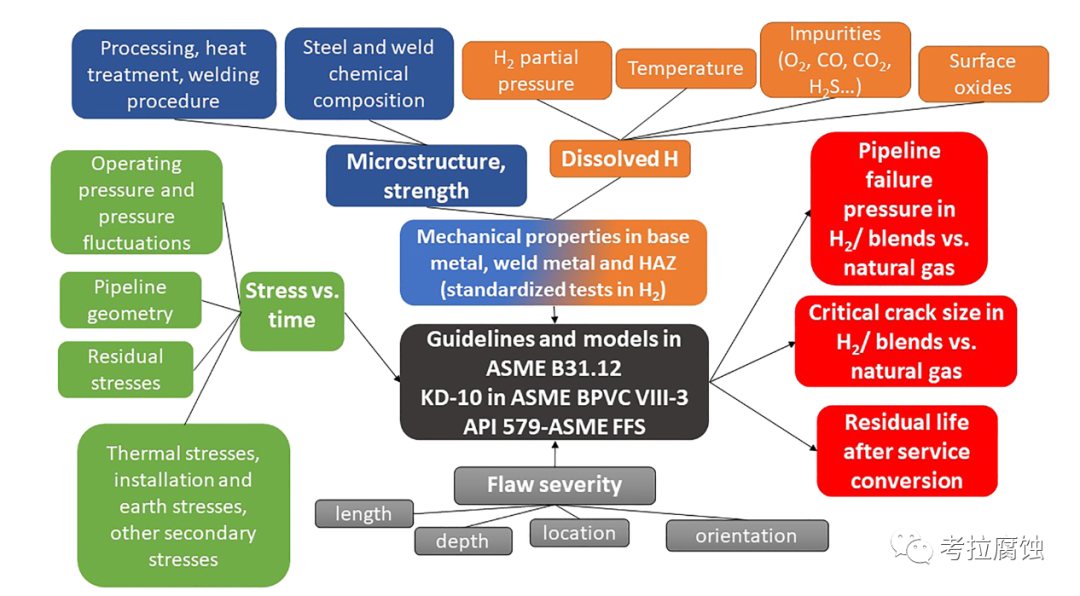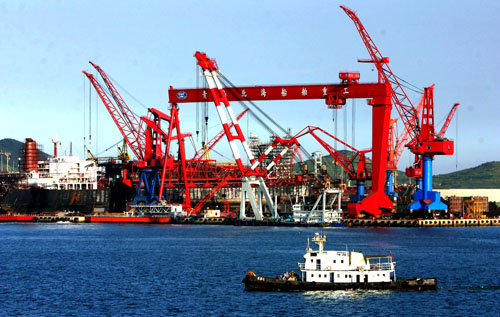學習加拿大卡爾加里大學、加拿大皇家科學院院士程玉峰教授《進一步推進輸氫管道氫脆研究探討》報告受益匪淺,報告中提及的10個問題,梳理(英譯中)如下:
Q1: Does enough H atoms generate in gaseous hydrogen pipeline to cause crack? 含氫/氫氣管線中能否產生足夠的H原子從而導致開裂?
Q2: Is the cathodic H-charging representative of the gasous H-charging? 陰極電化學充氫是否可以代表氣相充氫?
Q3: Why are H atoms not charged (or at an appreciable amount) in the steels in gasous environments? 在氣相環境下,鋼中為何沒有充氫(或氫含量不高)?
Q4: What is a reliable gaseous H-charging method with a convincing reproducibility? 哪一種方法是可靠、重現性好的氣相充氫方法?
Q5: While the controversial results on stress strain behavior are obvious, which is correct and how does the H2 gas environment affect the deformation behavior of steels? 已發表研究文獻中應力應變行為有著明顯的相反結果,哪一方是正確的?氫氣環境是如何影響鋼材的(塑性)變形行為?
Q6: While the SSRT results are obviously controversial, does the cyclic loading affect H atom entry and thus the fatigue behavior of steels? How is the H-fatigue interaction? 文獻中一些SSRT實驗結果明顯是相反的,循環載荷是否影響了氫原子的進入從而對鋼材的疲勞行為產生影響?
Q7: How is the amount of accumulated H atoms at pipeline defects quantified?More important, how are the modeling results verified one pipes?如何量化管道缺陷處積累的氫原子量?更重要的是,如何在一個管道中驗證建模的結果?
Q8: How is th pipeline surface condition reproduced in the lab to obtain realistic H-charging results under controllable test conditions? 如何在實驗室中再現管道的表面狀態,從而在可控試驗條件下獲得真實的充氫實驗結果?
Q9: How does the cyclic loading affect the H atom entry and distribution in steels? 循環載荷如何影響氫原子進入鋼中以及在鋼中的擴散?
Q10: How does the cyclic loading reduce the threshold H concentration to initiate cracks? 循環載荷如何降低氫濃度閥值從而誘發裂紋?
免責聲明:本網站所轉載的文字、圖片與視頻資料版權歸原創作者所有,如果涉及侵權,請第一時間聯系本網刪除。

官方微信
《腐蝕與防護網電子期刊》征訂啟事
- 投稿聯系:編輯部
- 電話:010-62316606
- 郵箱:fsfhzy666@163.com
- 腐蝕與防護網官方QQ群:140808414






